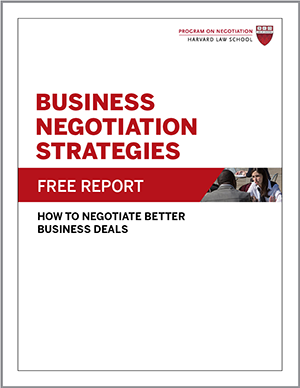
It stands to reason that devoting less time to relatively unimportant choices should free you up for more meaningful pursuits and increase your overall satisfaction. But how does the concept of satisficing ( a combination of satisfying and and suffice) apply to your most important decisions and negotiations?
Negotiators who use satisficing rely on shortcuts and rules of thumb when sorting through various options. In doing so, satisficers are better able to cut to the chase. Their chosen course of action may not be the very best, but it won’t require a monumental effort to launch. Studies show that satisficers end up happier with their outcomes than do maximizers.
Consider the issue of saving for retirement. Many Americans are flummoxed by the array of 401(k) investment choices offered by their employers that they put off these decisions year after year, forfeiting untold thousands of dollars. To liberate its customers from this decision paralysis, Fidelity Investments launched Fidelity Freedom Funds, a program that offers investors “freedom from choice.” Fidelity describes how it asks its customers for “Basic information – how old are you, when do you want to retire, what is your risk profile – and then says, ‘Trust us. We’ll invest the way you would want us to invest; now you can forget about it.'”
When it comes to negotiation, an excess of choices can not only be overwhelming but also can blind you to a good offer. The owner of a midsized business who deliberated too long about whether to (1) accept a large chain’s buyout offer, (2) partner with another midsized firm, or (3) keep his business independent found his negotiation position considerably weakened when the chain decided to buy out his competitor instead.
The point of the negotiation is not to win, but to achieve a deal that is good enough. Negotiators who satisfice don’t haggle over every last penny. With clear objectives you can achieve a deal that satisfies those objectives.
On the same note, when satisficing, be careful letting your counterpart know your bottom-line, highest price, or lowest acceptable bid. This is an example of the anchoring effect in negotiation and demonstrates the powerful effect of information on bargaining strategy.
The prospect of sharing information with a negotiating counterpart can be scary – it can fix your counterpart into a position at the negotiation table you didn’t intend (an example of the anchoring effect). Share too much, and the other side might conclude that you’re desperate to make a deal, any deal. There’s also the risk of giving away privileged information that your counterpart could use against you. A careful analysis of the pros and cons of sharing information in negotiation will help you approach negotiation scenarios with a greater sense of confidence and security.
Don’t wait for the other side to open up to you first. The advantages of sharing information during negotiation have been well documented. Thanks to the power of reciprocity, your counterpart is likely to match any information you share with valuable information of his own.
In general, you should feel comfortable revealing information about your interests in the negotiation, as well as your priorities across different issues. That doesn’t mean that if there are five issues on the table, you should reveal that you care about only two of them. Rather, stress that all the issues are important to you, but you’d have a hard time budging on two of them.
Have you used satisficing in negotiation?
Adapted from “Focus Your Negotiations on What Really Matters” by Susan Hackley in the September 2006 issue of the Negotiation newsletter and “How Much Should You Share?” first published in the Negotiation newsletter, April 2010.
This article was originally published in 2013.





Those skills are important when it comes to business.